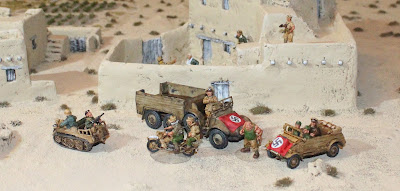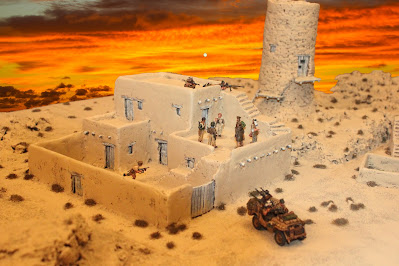A wisp of smoke escaped from Sir Douglas d’Emfore’s pipe. Cautiously, Sir Douglas inserted a fresh wisp. Sir Douglas gazed out of his office window at 64 Baker Street at an overcast and gloomy sky. “Rain, I think, Moneypenny”, he said to his assistant, in a somewhat distracted manner.
The von Spanckwürst problem had come to the fore and, as head of ‘G’ Section, Special Operations Executive, it was down to him to formulate a plan. Normally a decisive and resolute head of section, Sir Douglas was at a loss as to how to proceed on this knotty problem.
A ‘flimsy’ had arrived on his desk from the de-coding section deep in the bowels of the building, very early that morning. As was his habit, Sir Douglas had been camping out in his office and was shaken awake by Miss Moneypenny at sparrow-fart, as he liked to call it. It was marked ‘Most Urgent’ and originated from Verity ‘Peaches’ Snapcase. Peaches was currently the only female SOE agent operating in Berlin. She had been parachuted into Germany in 1941 and now, in the spring of 1942 she had hit the jackpot. Unless, of course, it was a double-bluff by the Abwehr?
D'Emfore’s mind drifted back to those halcyon days in 1934, back before the knighthood and the desk job. He’d been a ‘joe’, a field agent in Berlin, under the auspices of MI6. He smiled fondly at memories of the nightlife, the cabarets, the nightclubs and the showgirls…and Marlene. Marlene! Marlene Dietrich, now there was a name to conjure with.
His intention at the start had been to recruit Marlene as a source. Not a field agent as such, but a source of information. She was already a movie star and was only back in Berlin, to see friends and family. She made no secret of the fact that she despised Herr Hitler and the Nazis and was involved in helping dissidents escape Germany.
The recruitment was a success and many useful nuggets of information were passed back to 54 Broadway, the SIS headquarters. However, D.M. (as he was known to his friends) fell in love with Marlene, as did many men at the time. Their affair was brief, as Marlene had to return to Hollywood to film The Scarlet Empress. Marlene kept in touch and passed on any information she had gleaned from refugees who she assisted in escaping the Nazis.
Well, he thought, that was all water under the bridge now. He already had had a big triumph in 1933 with the Jonny X case, before he met Marlene. Then, in July 1939, in Pyry near Warsaw, D.M. was introduced by his Polish counterparts into their Enigma-decryption techniques and equipment, including Zygalski sheets and the cryptologic "Bomba", and were promised future delivery of a reverse-engineered, Polish-built duplicate Enigma machine. This was the beginning of the Enigma project and D.M. picked up a knighthood in the New year’s Honours list.
Sir Douglas was looking forward to a spectacular rise, up through the ranks of MI6. Particularly as his old school chum, Admiral Sir Hugh "Quex" Sinclair was ‘C’, the head of MI6. Unfortunately, Quex died suddenly in 1939 and was replaced as ‘C’ by Lt Col. Stewart Menzies (Horse Guards), who had been with the service since the end of World War I. Ordinarily, this would not have been a problem. However, in 1938, D.M. had been caught in flagrante delicto with Menzies’ wife in a Kensington hotel and the scandal would now come back to haunt him. Menzies, as was to be expected, had no love for Sir Douglas, even though he had brought the key to the German’s Enigma machine back to blighty. D’Emfore was posted to what Menzies viewed as a backwater, the newly formed Section D and became responsible for propaganda in 1939. A lucky break occurred when Section D became part of the Special Operations Executive, and D.M. was part of the department tasked by Churchill to “go and set Europe ablaze”. When Brigadier Colin Gubbins, an old Shirburnian and classmate of D.M.s was appointed Director of SOE, Sir Douglas was back on track and rapidly became head of G Section, that part of SOE responsible for creating havoc in Germany.
Sir Douglas arose from his reverie and started to pace up and down like a caged tiger. All this living in the past was not going to solve the von Spanckwürst issue. Down to brass tacks and a straight bat to the wicket, he told himself. “Brace up, man!” he shouted at himself, startling Moneypenny who was just bringing in the Darjeeling and ginger nuts.

.jpg)






















